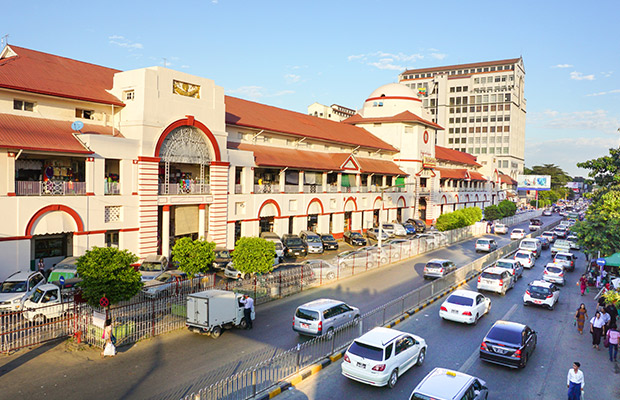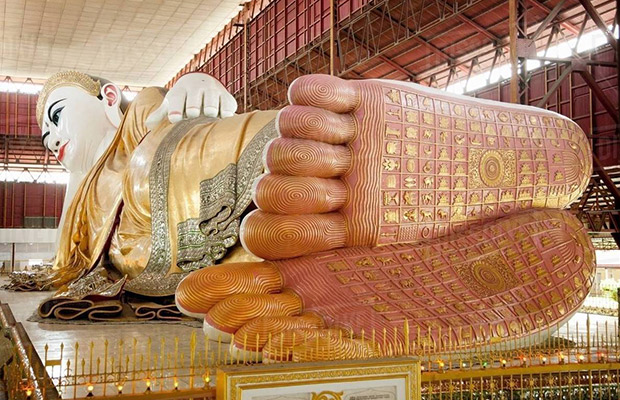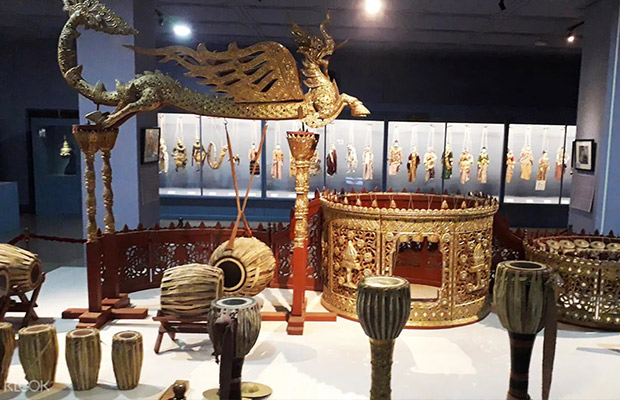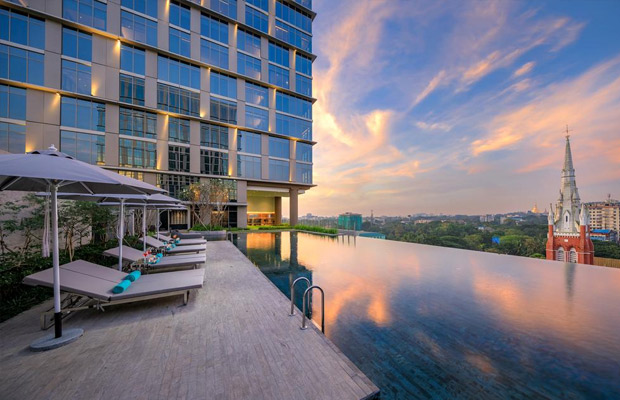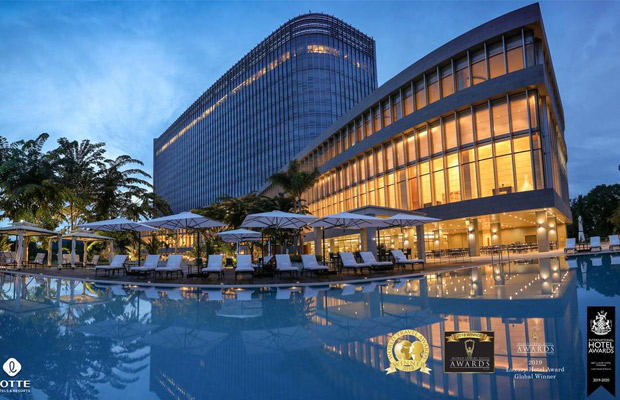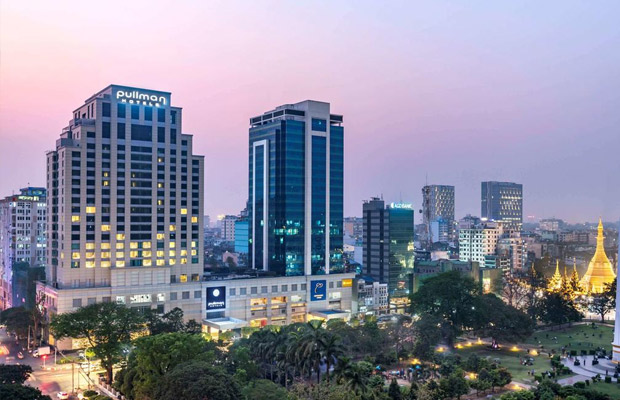Sule Pagoda
Sule Pagoda
Myanmar
Yangon
Yangon Travel Guide
Book Tour & Activities
Your tour in Yangon.
Book your stay
Your hotel in Yangon.
Overview
The Sule Pagoda is a Burmese stupa located in the heart of downtown Yangon, occupying the centre of the city and an important space in contemporary Burmese politics, ideology and geography. According to legend, it was built before the Shwedagon Pagoda during the time of the Buddha, making it more than 2,600 years old. Burmese legend states that the site for the Shwedagon Pagoda was asked to be revealed from an old nat who resided at the place where the Sule Pagoda now stands. The Sule Pagoda has been the focal point of both Yangon and Burmese politics. It has served as a rallying point in both the 1988 uprisings and 2007 Saffron Revolution. The pagoda is listed on the Yangon City Heritage List.
Amidst the bustle of Yangon city, among colonial buildings like the Supreme Court or the city hall, there is a small temple called Sule Paya. This temple is not only a religious site but also a historical landmark in Yangon.
The Sule Pagoda, or Sule Paya, is located in downtown Yangon, at the intersection of two major roads, Sule Pagoda and Mahabandoola Road. The temple is located like a jewel glowing in the middle of the street, especially at night, giving it a mysterious yet magnificent beauty that every tourist wants to explore.
Ancient octagonal pagoda in the center of Yangon
The Sule Paya is a small pagoda located in the center of Yangon. The pagoda, known in Burmese as the Kyaik Athok Zedi, is surrounded by busy streets, a market and colonial era buildings like the Supreme court building and Yangon city hall.
According to legend the pagoda was built during the lifetime of the Gautama Buddha, about 2,500 years ago. The pagoda was much smaller at the time. It has been renovated and enlarged several times by later Kings. The paya reached its present height when it was renovated halfway the 15th century.
History and legend
According to Burmese legend the site where the Sule pagoda now stands was once the home of a powerful nat (spirit) named Sularata (the Sule Nat). The king of the Nats, Sakka, wished to help the legendary king Okkalap build a shrine for the Buddha's sacred hair-relic on the same site where three previous Buddhas had buried sacred relics in past ages. Unfortunately, these events had happened so long ago that not even Sakra knew exactly where the relics were buried. The Sule nat, however, who was so old that his eyelids had to be propped up with trees in order for him to stay awake, had witnessed the great event. The gods, Nats and humans of the court of Okkalapa therefore gathered around the Sule Ogre and asked him the location, which he eventually remembered.
The Sule Pagoda was made the center of Yangon by Lt. Alexander Fraser of the Bengal Engineers, who created the present street layout of Yangon soon after the British occupation in the middle of the 19th century. (Lt. Fraser also lent his name to Fraser Street, now Anawrattha Street and still one of the main thoroughfares of Yangon). It is a Mon-style chedi (pagoda), octagonal in shape, with each side 24 feet long; its height is 144 feet, 9 l/2 inches. Except for the chedi itself, enlarged to its present size by Queen Shin Sawbu (1453–1472), nothing at the pagoda is more than a little over a century old. Around the chedi are ten bronze bells of various sizes and ages with inscriptions recording their donors' names and the dates of their dedication. Various explanations have been put forward for the name, of varying degrees of trustworthiness: according to legend it was called su-way, meaning "gather around", when Okkapala and the divine beings inquired about the location of Singattura Hill, and the pagoda was then built to commemorate the event; another legend connects it su-le, meaning wild brambles, with which it was supposedly overgrown, and a non-legendary suggestion links it to the Pali words cula, meaning "small" and ceti, "pagoda"
Stupa
The Sule Pagoda incorporated the original Indian structure of the stupa, which initially was used to replicate the form and function of a relic mound. However, as Burmese culture became more independent of its South Indian influences, local architectural forms began to change the shape of the pagoda. It is believed to enshrine a strand of hair of the Buddha that the Buddha himself is said to have given to the two Burmese merchant brothers, Trapusa and Bahalika. The dome structure, topped with a golden spire, extends into the skyline, marking the cityscape.
Other structures on the grounds
Around the pagoda is a circular structure housing small shops where services as astrology and palmistry are offered. Four entrances topped with multi tiered Pyatthat roofs provide access to the Sule grounds. Shrines around the pagoda house images of the Buddha, bronze bells are rung by Buddhist devotees making merit.
Hintha bird & Nat spirits
Several depictions of a Hintha bird, the symbol of Bago, can be found on the temple grounds. One of the mythological birds with a miniature pagoda on its back sits on top of a pole in a lotus flower, another one with a shrine on its back hangs down from a steel cable.
Several images of Nat spirits are found on the Sule grounds. Nat spirits have been worshipped in Burma for centuries, the most important ones live on Mount Popa.
How to get to the Sule Pagoda
The pagoda is located in the center of Yangon about halfway between the central railway station and the Yangon river. It is found in the center of a roundabout on the junction of Sule road and Maha Bandula road.
Opening hours
The Sule Paya opens daily from 6 am until 10 pm.
Near the pagoda’s entrance visitors shoes are put on shelves before entering the grounds.
Entrance fee
Entrance fee is US$ 3 per person. Foreign visitors are requested to make a donation in the range of 500 to 1,000 Kyat.
A guide can be hired who explains about the pagoda’s history and Buddhist belief and rituals. The rate is about US$ 5 to US$ 10 depending on bargaining efforts.
Sule Pagoda
- Address: Junction of Sule Pagoda Road, Yangon 11141, Myanmar (Burma)
- Height: 45 m
- Phone: +95 1 371 561
- Architectural style: Buddhist architecture
Video Travel Inspiration
See Sule Pagoda on Map
Most Popular Cities

Siem Reap
Cambodia
Ho Chi Minh City
Vietnam
Beijing
China
Paris
France
London
United Kingdom
New York
USA
Tokyo
Japan
Bangkok
Thailand
Seoul
South Korea
Vientiane
Laos
Yangon
Myanmar
Washington DC
USA
Los Angeles
USA
Ottawa
Canada
New Delhi
India
Singapore
Singapore
Kuala Lumpur
Malaysia
 English
English French
French Khmer
Khmer Thai
Thai Vietnamese
Vietnamese Chinese
Chinese Korean
Korean German
German Japanese
Japanese Italian
Italian Russian
Russian Spanish
Spanish Dutch
Dutch Indonesian
Indonesian Malay
Malay




